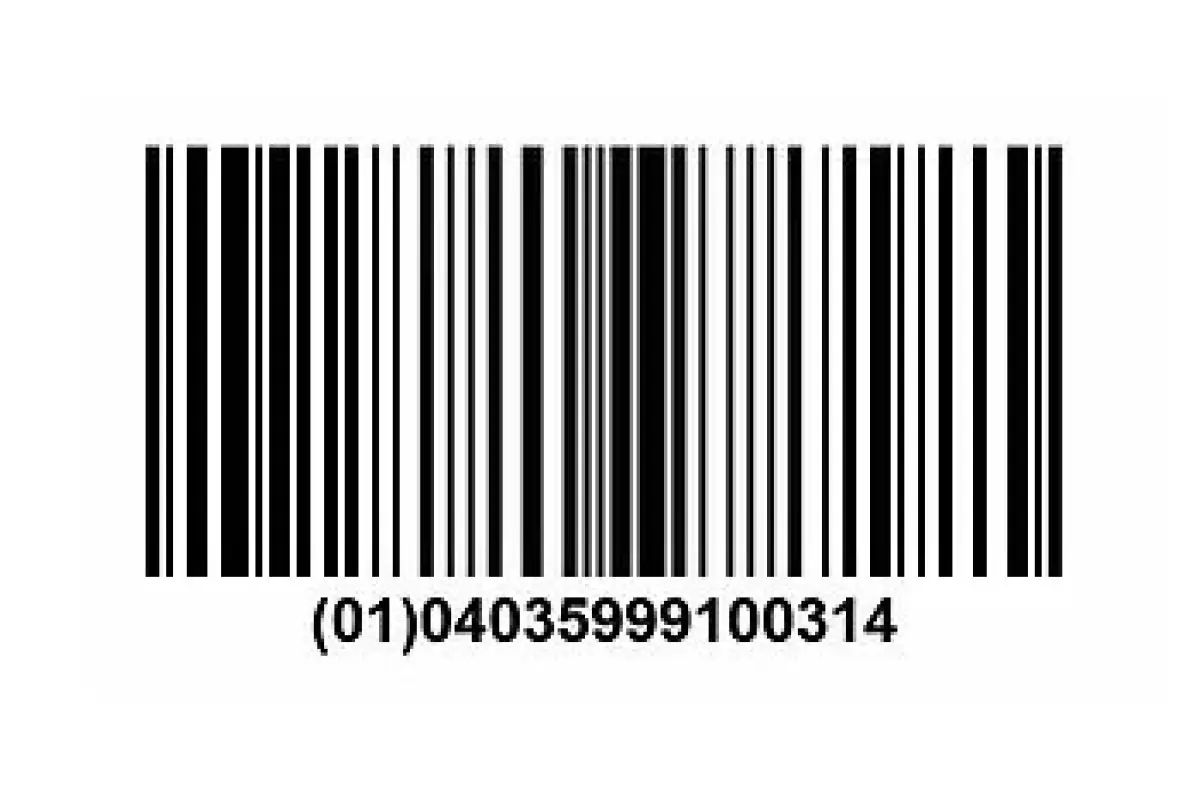
Application example
A GS1-128 barcode
You have currently selected the following location:
Now switch to the following location:
The EAN barcode is a type of barcode that encodes an article number. Originally, only "European Article Numbers" (EANs) were encoded in EAN codes. Since 2009, however, EAN codes have encoded Global Trade Item Numbers (GTIN). In addition to the one-dimensional EAN codes, GTINs are now also encoded in two-dimensional codes such as data matrix codes.

A GS1-128 barcode
Important: EAN code does not have the same meaning as EAN. EAN stands for ‘European Article Number’. It was introduced by the predecessor of today's GS1 with the aim of providing all European products with individual article numbers. In 2009, the EAN was replaced by the 13-digit Global Trade Item Number (GTIN).
The following EAN code variants are distinguished:
EAN8 |
The EAN 8 code identifies the manufacturer and the product. It consists of eight digits: 2-3-digit country code, 4-5-digit item code and check digit. The EAN 8 code is used primarily for small items where there is little space for labelling.
|
EAN8 P2 |
For magazines and paperbacks, the EAN8 code is often supplemented with additional digits (e.g. for weights or prices). The EAN8 P2 code consists of an EAN8 code and two additional digits, which are encrypted in a separate barcode to the right of the EAN8 code.
|
EAN8 P5 |
The EAN8 P5 code adds five digits to the EAN8 code. In the case of magazines and paperbacks, these digits are usually used to indicate the product price. As with the EAN8 P2 code, the additional digits are encrypted in a separate barcode to the right of the EAN8 code.
|
EAN13 |
The EAN 13 code, the classic EAN code, is used to encode a complete GTIN. This code is used to label products in retail stores so that they can be scanned at supermarket checkouts, for example.
|
EAN13 P2 |
For magazines and paperbacks, the EAN13 code is often supplemented with additional digits (e.g. for weights or prices). The EAN13 P2 code consists of an EAN13 code and two additional digits, which are encrypted in a separate barcode to the right of the EAN13 code.
|
EAN13 P5 |
The EAN13 P5 code adds five digits to the EAN13 code. In the case of magazines and paperbacks, these digits are usually used to indicate the product price. As with the EAN13 P2 code, the additional digits are encrypted in a separate barcode to the right of the EAN13 code.
|
EAN14 |
The EAN 14 code is used to encode a 14-digit GTIN. The first digit is a special ‘packaging indicator’. In addition, a two-digit, predefined data identifier (AI) is given in brackets before the GTIN. |
EAN128 / GS1-128 |
The EAN128 code offers universal application possibilities, for example in retail, logistics, mail order or food labelling. In addition to the GTIN, the EAN128 code can also be used to encode information such as quantity, weight, price, etc. This can be up to 48 pieces of user data. Unlike the other EAN codes, the EAN128 can be used to encode not only the digits 0 to 9, but also letters in upper and lower case, as well as other characters (a total of 128 different characters in the ASCII code).
|
The EAN13 code consists of a barcode and 13 numbers:
The GTIN is encrypted in the barcode. Read from left to right, the code is made up of the following components:
The barcode consists of black and white lines of varying widths. Behind this is a binary code system consisting exclusively of zeros and ones. In the EAN code, black lines represent ones and white lines represent zeros. To ensure that the code can be read in both directions, the first digit on the left is always odd. This enables the scanner to recognise the reading direction and, if necessary, to rotate the code during decoding.
In addition to the barcode, the EAN code includes the repetition of the corresponding GTIN in plain text. The digits are located below the barcode. The first digit is on the far left before the first edge marking. The remaining digits are each located below the barcode section in which they were encrypted.
The Global Trade Item Number is composed of a two-digit country code, a five-digit manufacturer code (together form the individual ‘Global Location Number’ GLN), a freely selectable sequence of digits and a check digit.
The check digit is the 13th digit of the GTIN and must be recalculated for each sequence of digits.
EAN codes on labels enable the automated reading of article numbers (for example at supermarket checkouts). In contrast to manual reading, this process is not only considerably faster, but also less prone to error. It thus increases the efficiency of processes in retail, logistics and production.